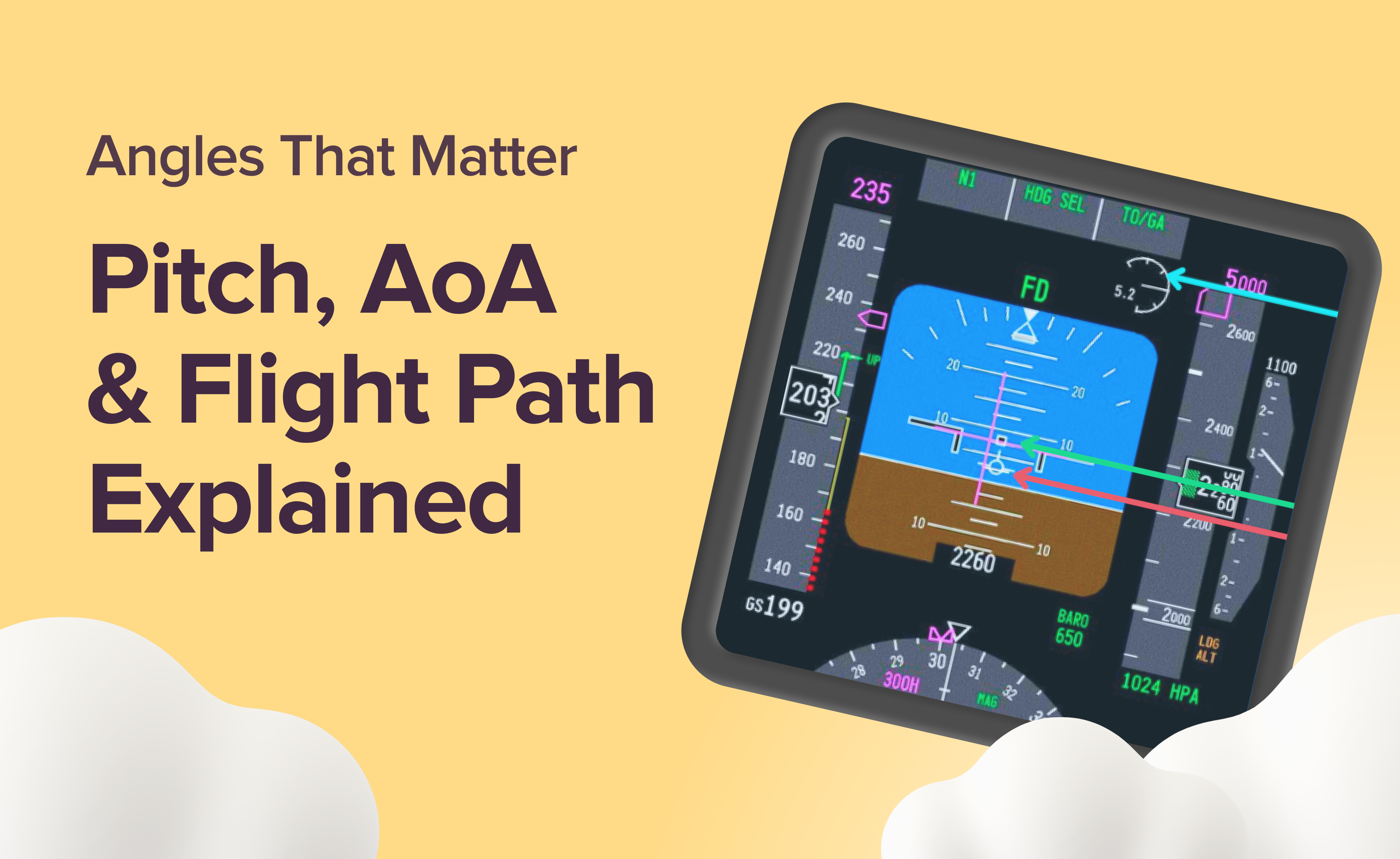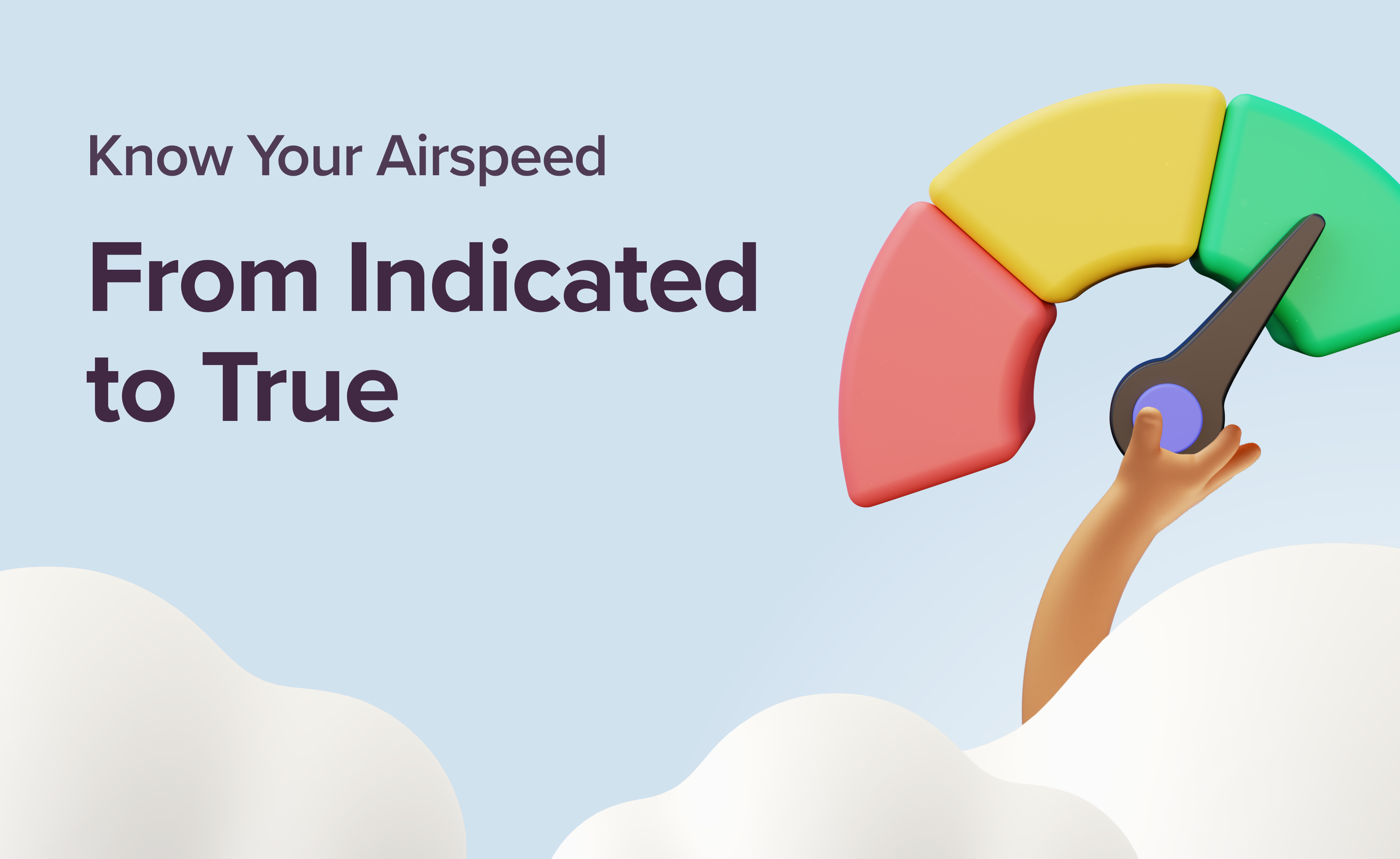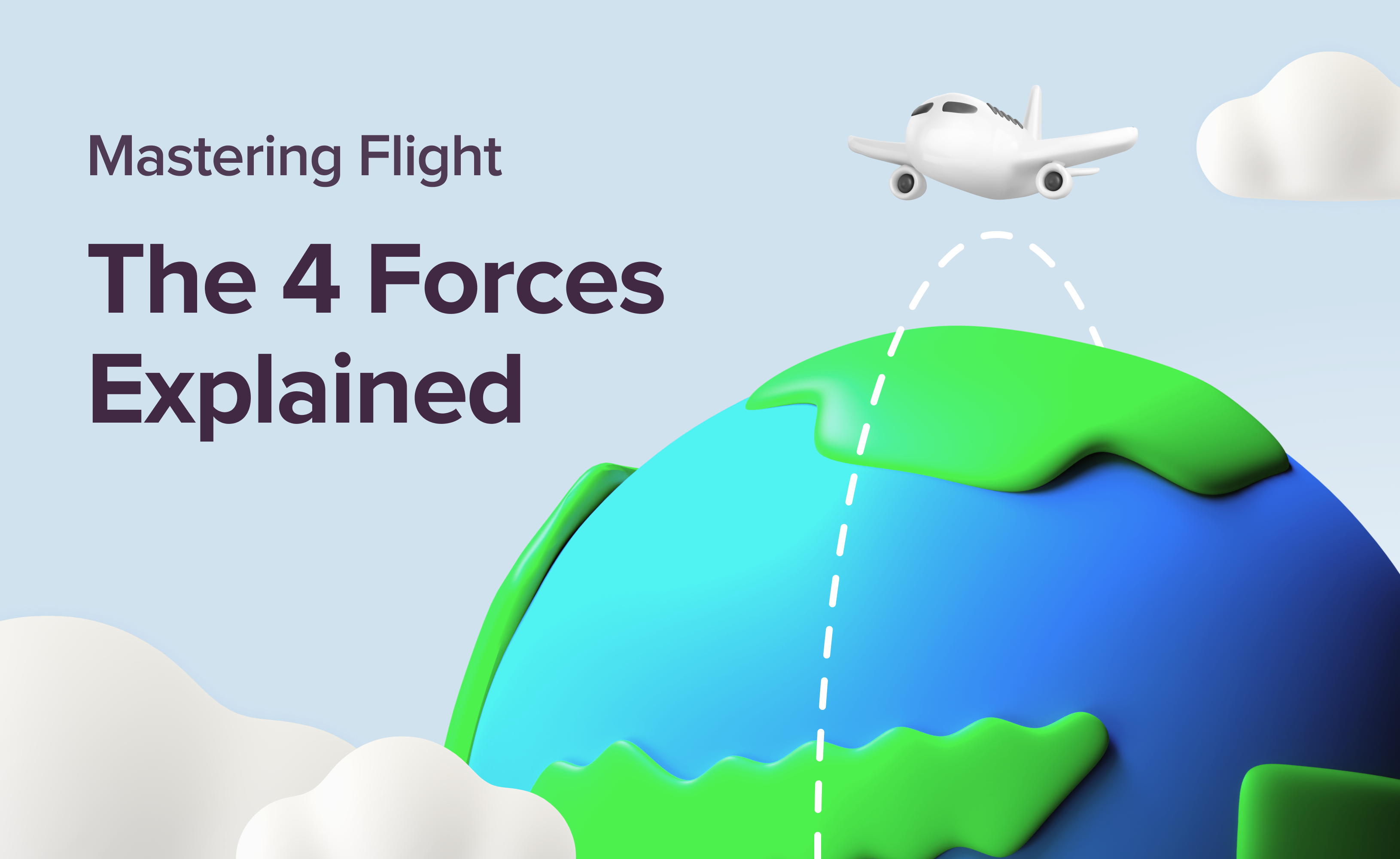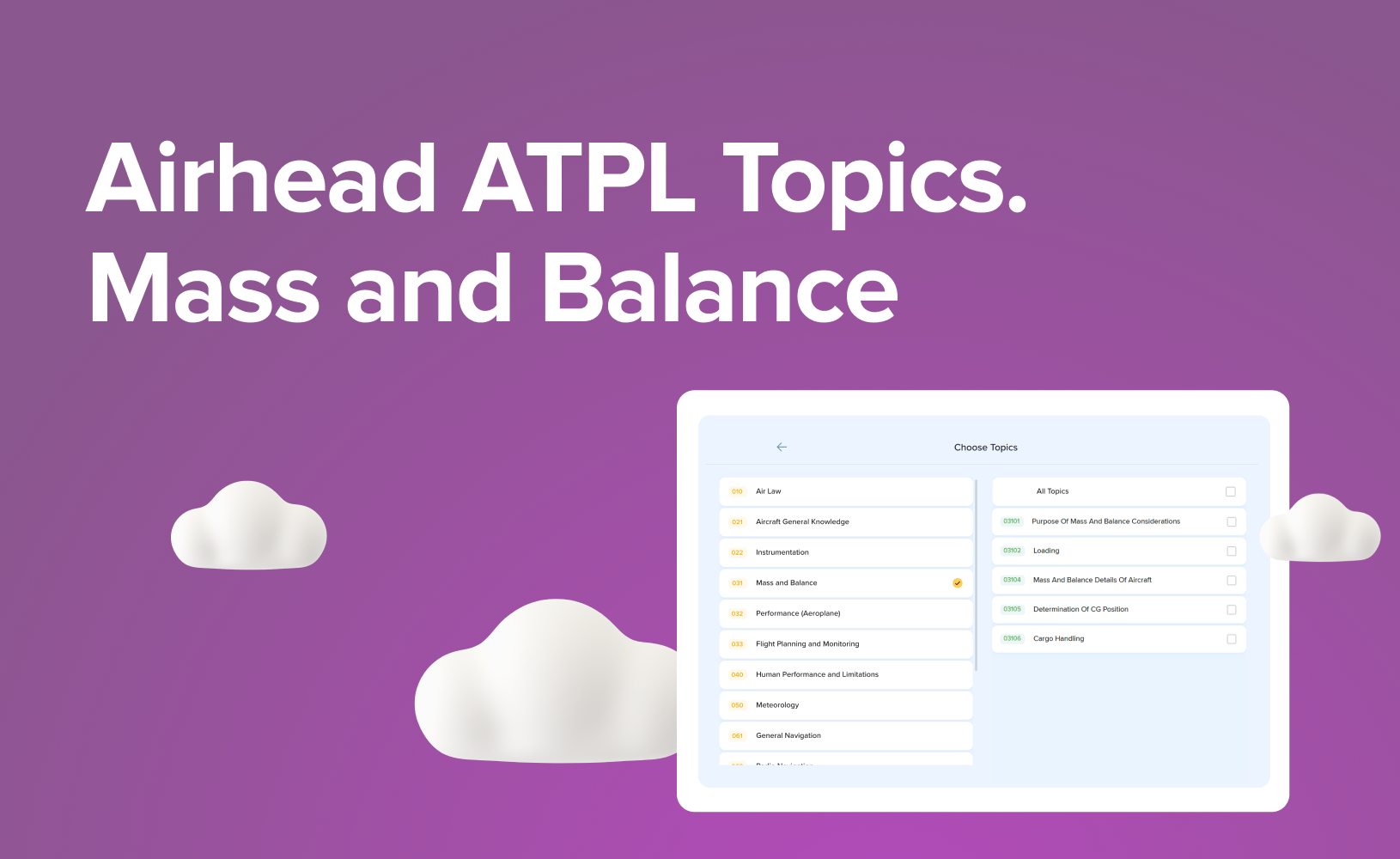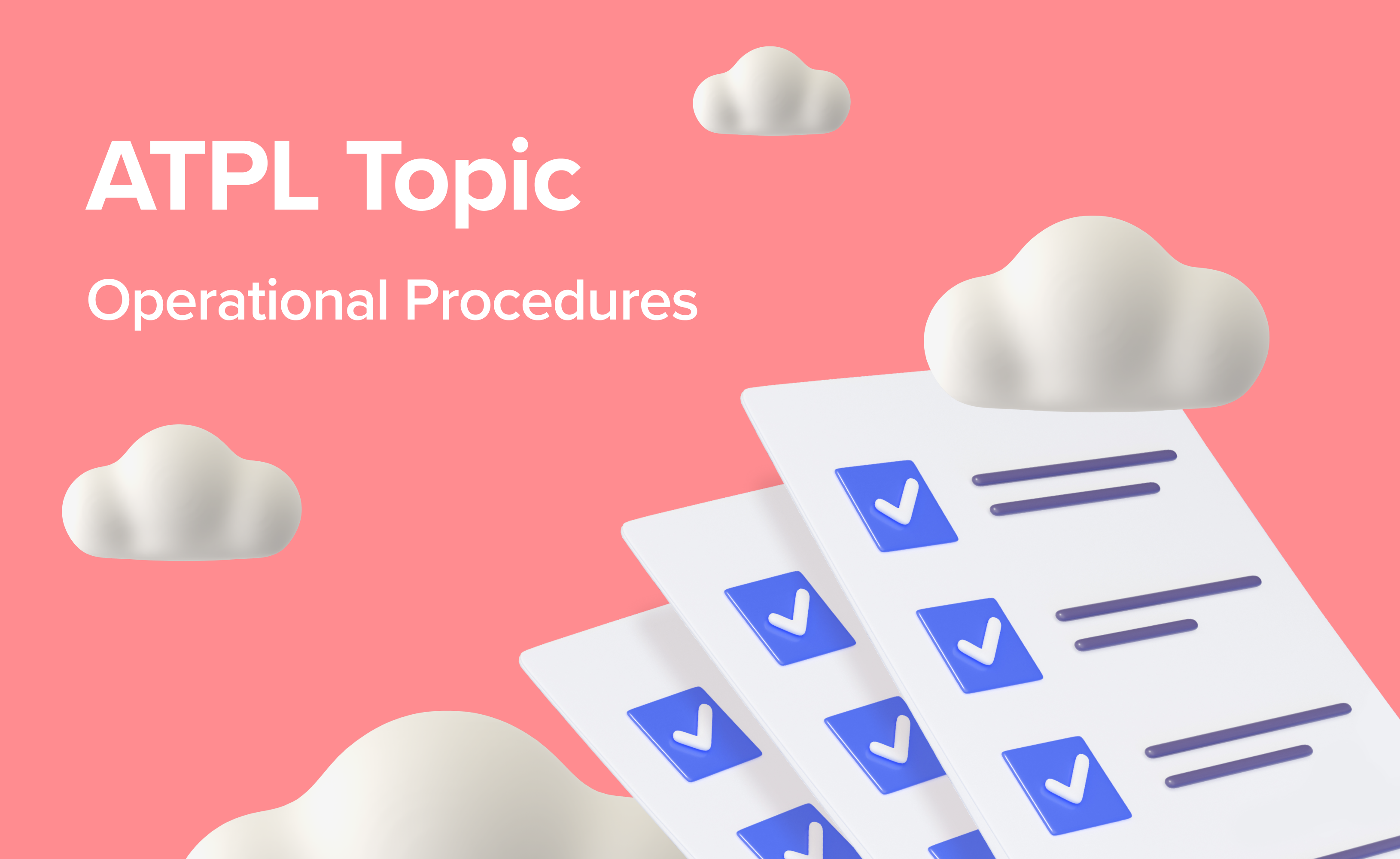Deep Dive into Flight Planning and Monitoring for ATPL Exams
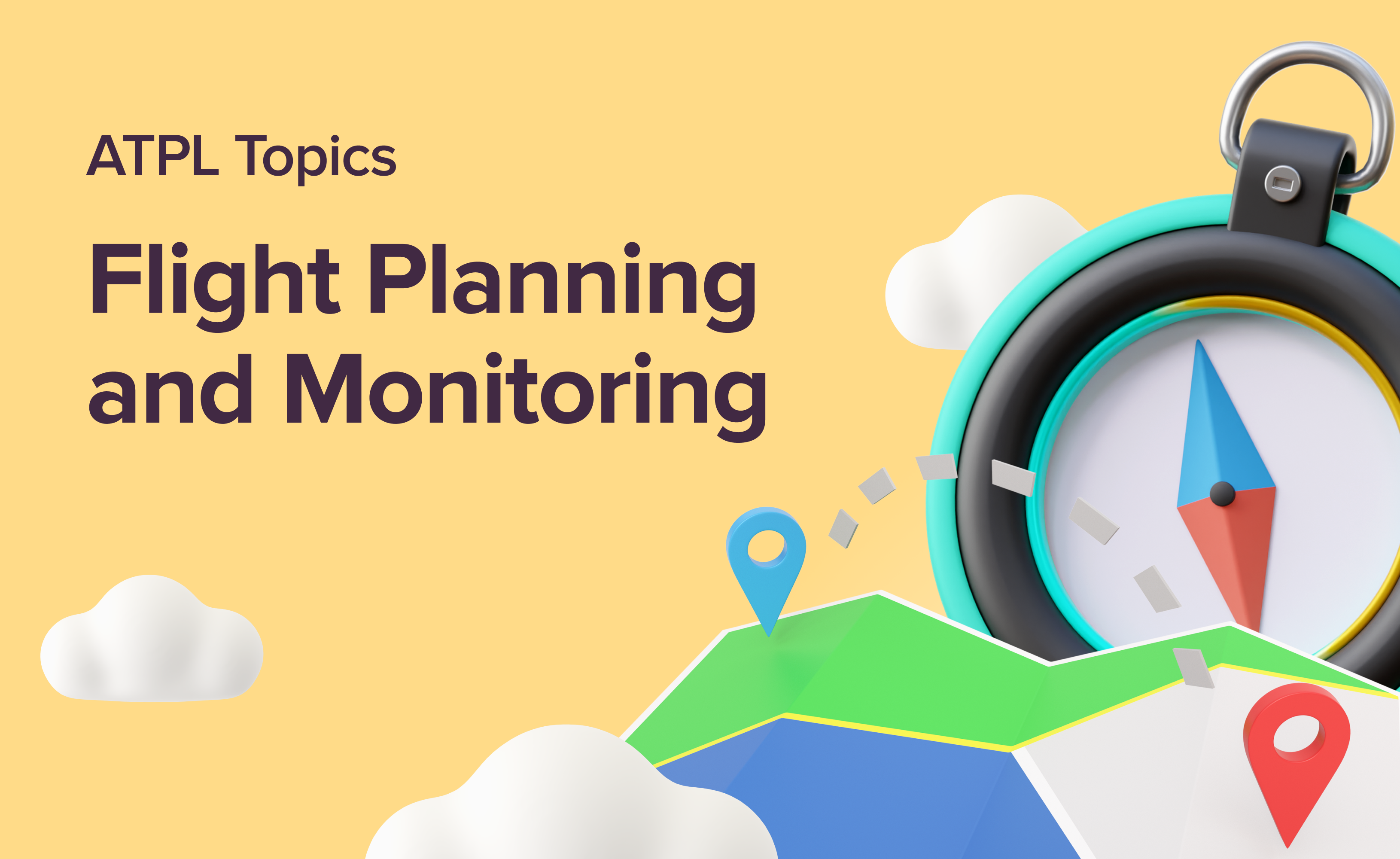
Introduction to the Topic
Ever imagine being rerouted mid-flight due to unexpected thunderstorms? Or perhaps you've wondered how pilots ensure they have enough fuel to reach their destination – even with unforeseen delays?
These scenarios highlight the crucial role of flight planning and monitoring subject. For aspiring ATPL pilots, mastering these skills and knowledge is indispensable for safe, efficient, and successful flights. From meticulously charting courses before take-off to constantly evaluating progress during the journey – flight planning and monitoring are the cornerstones of a pilot's decision-making in the air.
Flight Planning goes beyond simply plotting a course on a map. It's a comprehensive pre-flight process ensuring a safe, legal, and efficient journey.
Key subtopics covered in the ATPL syllabus typically include:
Performance calculations: This involves calculating factors like take-off and landing mass, fuel requirements, endurance, and payload limitations for a specific aircraft and route.
Navigation: Pilots plan their flight path using various techniques like dead reckoning, pilotage, and radio navigation. ATPL training covers the in-depth use of navigation charts, weather information, and flight management systems (FMS).
Aerodrome operations: Understanding procedures for take-off, landing, taxiing, and emergencies at different airports is essential. Flight plans consider factors like runway lengths, airspace restrictions, and emergency services availability.
Flight documentation: Completing necessary paperwork like flight plans, mass and balance calculations, and navigation logs is a vital part of flight planning.
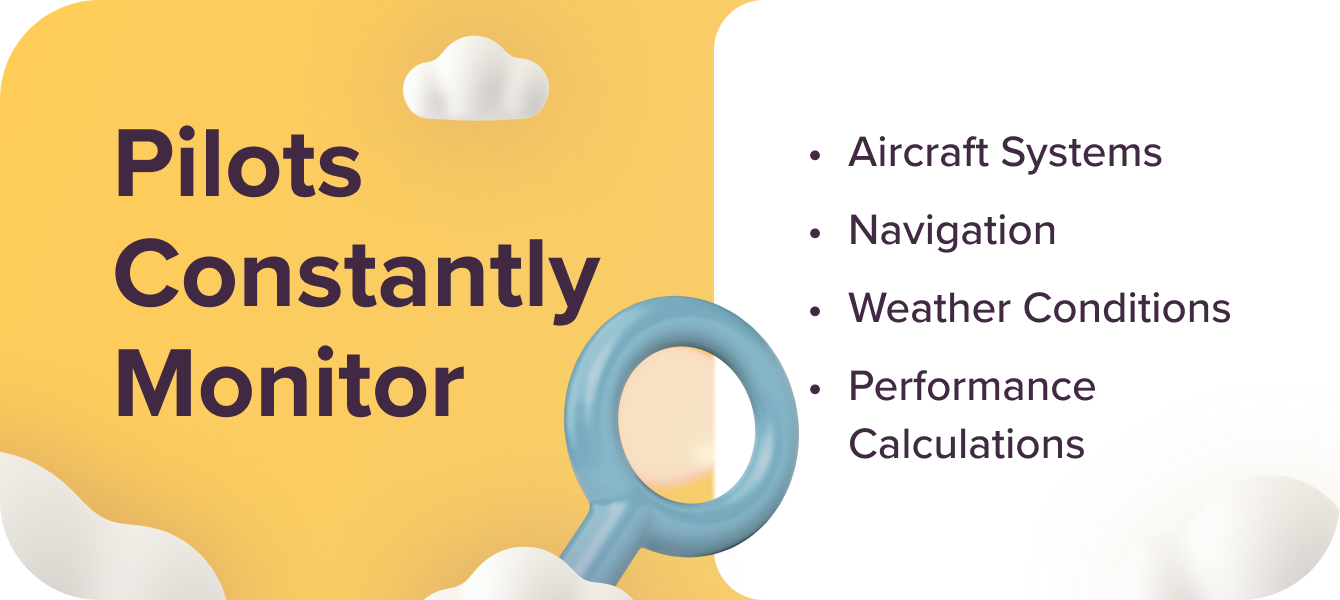
Flight Monitoring involves continuously assessing the progress of the flight throughout the journey. ATPL pilots constantly monitor:
Aircraft systems: Monitoring engine performance, fuel levels, hydraulics, and other vital systems ensures the safe operation of the aircraft.
Navigation: Pilots compare their actual position with the planned flight path, making adjustments for weather deviations or air traffic control instructions.
Weather: Staying updated on real-time weather conditions and interpreting forecasts allows pilots to make informed decisions about route changes or potential diversions.
Performance calculations: Monitoring factors like fuel consumption, ground speed, and altitude helps pilots ensure they stay on schedule and within safe operating parameters.
This in-depth understanding of flight planning and monitoring forms the foundation for a successful career in professional aviation.
Exam Overview
Number of Questions: 42;
Exam Duration: 2 hours;
Difficulty: Hard;
65% of papers passed.
The Flight Planning and Monitoring ATPL exam is a comprehensive assessment that challenges your proficiency in route planning, flight calculations, and fuel policy knowledge. With 42 questions to tackle in a rigorous two-hour timeframe, you'll need to demonstrate adept time management skills and a thorough understanding of aviation principles.
While the “hard” difficulty rating may seem daunting, it's important to remember that success is achievable. Despite the demanding nature of the exam, 65% of candidates have successfully navigated through it, proving that with the right preparation and dedication, you can overcome any challenge that comes your way.
To excel in this exam, it's crucial to engage in thorough preparation, including regular practice with question banks, simulated flight scenarios, and interactive discussions with instructors and peers. So don't be discouraged by the difficulty rating – embrace the opportunity to showcase your expertise and pave the way towards your ATPL success!
This link has the most extensive guide on 13 ATPL subjects and their difficulties.
Syllabus Topics Covered

033 01 Flight Planning for VFR Flights
Flight Planning for VFR Flights is the process of preparing for a flight conducted under Visual Flight Rules (VFR). It involves creating a safe and efficient flight path while adhering to regulations and airspace restrictions. Thorough VFR flight planning downplays risks and allows pilots to react effectively to unforeseen situations.
Here's what this entails and key areas to focus on:
Navigate with Confidence: Become a chart expert, hone dead reckoning, and master pilotage for visual navigation.
Airspace and Rules: Understand controlled vs. uncontrolled airspace, identify Temporary Flight Restrictions (TFRs), and know Minimum Safe Altitudes (MSAs).
Weather Wise: Interpret METARs/TAFs, plan around poor weather, and always check forecasts before the flight.
Plan Your Route: Consider regulations, and airspace, identify alternate airfields, and file a VFR flight plan with Air Traffic Control (ATC) (even for local flights).
Fuel & Emergencies: Calculate fuel needs (normal, alternate, holding) with the wind factored in. Be prepared for engine malfunctions, forced landings, and contacting ATC/emergency services.
By focusing on these key areas of VFR Flight Planning, you'll gain the confidence and knowledge needed to navigate the skies safely and responsibly as a pilot student. Remember, meticulous planning is the foundation for a successful VFR flight!
033 02 Flight Planning for IFR Flights
For Instrument Flight Rules, pilots rely primarily on cockpit instruments for navigation and control. This involves flying in weather conditions where visibility may be reduced or obscured, and pilots must adhere to specific instrument approaches, and departure, and arrival procedures. To ace your ATPL exams, focus on these key areas:
Chart Mastery: Decipher instrument approaches, departure/arrival procedures, and navigate airways using VOR, NDB, RNAV, and GPS.
Weather Savvy: Interpret weather forecasts, METARs, TAFs, and SIGMETs to navigate around icing, turbulence, and low visibility.
Performance Calculations: Master take-off/landing distances, climb rates, fuel needs, and mass & balance calculations for IFR flights.
Clear Communication: Learn effective ATC communication protocols and procedures for IFR operations.
Emergency Preparedness: Understand lost communication procedures, diversions, and equipment failure handling specific to IFR flight.
By mastering these key areas, pilots gain the necessary knowledge and skills to safely and effectively plan and execute IFR flights in various weather conditions and airspace environments.
033 03 Fuel Planning

Within the Flight Planning and Monitoring section of the ATPL EASA syllabus, fuel planning takes centre stage. By mastering these areas, you gain the knowledge and skills for effective fuel planning, management, and monitoring.
Calculating Fuel Needs: Pilots learn to meticulously calculate fuel requirements, considering factors like:
Flight distance and planned route
Expected weather conditions
Alternate airport requirements
Regulatory fuel reserves
Understanding Fuel Policies & Regulations: Grasping fuel policies and regulations set by aviation authorities is crucial. This includes:
Minimum fuel requirements
Fuel reserve calculations
Fuel contingency planning for unexpected situations
Estimating Fuel Consumption: Pilots learn to estimate fuel consumption based on aircraft performance data, including fuel flow rates during:
Climb
Cruise
Descent
Holding
Fuel Management Strategies: Developing strategies to optimise fuel efficiency is key. Pilots learn techniques for:
Minimising fuel burn
Managing fuel loads
Monitoring fuel consumption in real-time
Alternate Fuel Planning: Being prepared for the unexpected is vital. Pilots plan for alternate fuel needs in case of:
Diversions due to weather
Mechanical issues
Air traffic congestion
Fuel Monitoring & In-Flight Adjustments: Continuous monitoring of fuel consumption during flight allows pilots to make adjustments and ensure enough fuel remains for a safe landing.

033 04 Pre-Flight Preparation
In the realm of pilot practice, pre-flight preparation stands as a cornerstone for safe and efficient flight operations. Imagine a pilot carefully checking weather reports, looking at maps, charts, and warnings for important information. They plot their course, considering airspace restrictions, terrain, and navigational aids to chart the optimal route. With precision, they calculate aircraft performance parameters, ensuring accurate take-off and landing distances, climb rates, and mass distribution.
In the cockpit, pilots check and double-check flight documentation, verifying flight plans, NOTAMs, and all required aircraft documents. These meticulous preparations aren't just routine; they're essential for flight safety and regulatory compliance. By investing time and effort into pre-flight preparations, pilots anticipate challenges, mitigate risks, and ensure they're well-equipped for any eventuality once they're airborne.
033 05 ICAO Flight Plan (ATS Flight Plan (FPL))

The ICAO Flight Plan, also known as the ATS (Air Traffic Services) Flight Plan or FPL, is a standardised document used by pilots and air traffic control (ATC) personnel to communicate essential information about a planned flight. It serves as a comprehensive blueprint detailing the aircraft's route, intended altitude, speed, and other crucial details.
The ICAO Flight Plan typically includes information such as the aircraft's registration, type, and equipment codes, as well as the departure and destination airports, proposed route of flight, planned departure time, cruising altitude, and estimated time en route. Additionally, it may contain alternate airport details, fuel onboard, and other relevant remarks.
Submitting an ICAO Flight Plan is mandatory for certain flights, particularly those operating under instrument flight rules (IFR) or those crossing international boundaries. It allows ATC to efficiently manage air traffic, anticipate potential conflicts, and provide necessary support to ensure the safety and efficiency of the flight.
Overall, the ICAO Flight Plan plays a vital role in facilitating effective communication between pilots and ATC, aiding in flight planning, navigation, and coordination throughout the flight.
033 06 Flight Monitoring and In-Flight Re-Planning

This section delves into real-time evaluation and adjustment of flight plans during the journey. Here's what it covers:
Student pilots learn to monitor their flight progress while in the air, keeping a close eye on their position, weather conditions, and fuel usage. They're taught how to spot changes in the weather mid-flight and respond accordingly, steering clear of any adverse conditions like storms or turbulence.
Effective communication with air traffic control (ATC) is emphasised, ensuring students can get updated weather reports, change their route if necessary, or deal with any unforeseen circumstances.
Adaptability is key, with techniques taught for making in-flight adjustments to the planned route. This includes selecting alternative navigation points, re-routing to avoid restricted airspace, or altering the aircraft's altitude as needed.
Fuel management is another crucial aspect, with students trained to constantly monitor fuel consumption and assess reserves. They must ensure there's enough fuel to reach the destination safely, even considering options for diverting to alternate airports if required.
Finally, emergency procedures are covered, preparing students to handle unexpected situations mid-flight. They learn how to make quick decisions, whether it's diverting to an alternate airport or executing an emergency landing.
In essence, Flight Monitoring and In-Flight Re-Planning equip student pilots with the skills and knowledge to assess, adapt, and respond to changing conditions while ensuring the safety and efficiency of their flight.







